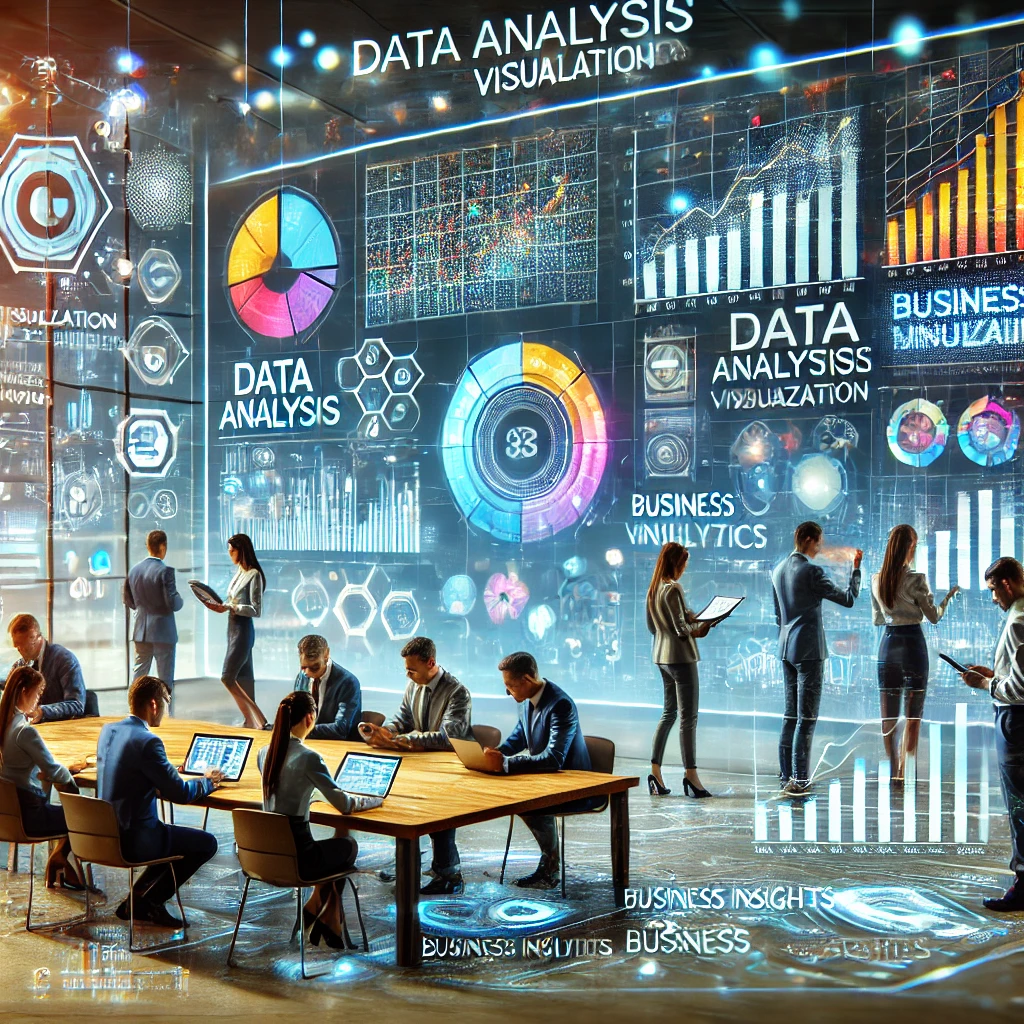In the ever-evolving world of business, data analysis and visualization are no longer optional—they’re essential. Business analysts today need to be adept at interpreting complex data sets and presenting insights that drive strategic decision-making. This blog explores key aspects of data analysis and visualization, best practices, tools, and techniques to empower business analysts to excel in their roles.
Why Data Analysis and Visualization Matter
- Data-Driven Decision-Making: Data analysis enables businesses to make informed decisions by uncovering patterns, trends, and actionable insights. With the increasing reliance on data-driven decision-making tools, business analysts play a pivotal role in ensuring that organizations remain competitive.
- Enhancing Communication: Data visualization techniques transform raw data into visual formats such as charts, graphs, and dashboards, making complex information easier to understand. Effective visualizations ensure stakeholders across departments can grasp critical insights quickly.
- Supporting Strategic Goals: By leveraging advanced analytics for business growth, analysts can align data insights with long-term strategic objectives, enabling organizations to adapt to market trends and customer needs efficiently.
Key Techniques in Data Analysis for Business Analysts
- Descriptive Analysis: This foundational method focuses on summarizing historical data. Techniques such as mean, median, and standard deviation help analysts identify patterns in past performance.
- Predictive Analysis: Using statistical models and machine learning algorithms, business analysts use predictive analytics to forecast future outcomes. This empowers teams to proactively address potential challenges and seize opportunities.
- Prescriptive Analysis: Prescriptive analytics provides actionable recommendations by combining predictive insights with optimization techniques. For instance, it’s invaluable in resource allocation or improving customer experiences.
Best Practices in Data Visualization
- Know Your Audience: Understanding the needs of your audience is critical. Tailor your visualizations to their expertise and interests, ensuring clarity and relevance.
- Simplify Complex Data: Avoid clutter by focusing on the most critical metrics. Tools like interactive dashboards help break down complex datasets into digestible insights.
- Choose the Right Visualization: The type of visualization you choose should complement the data. For example, use bar charts for comparisons, line charts for trends, and pie charts for proportions.
- Highlight Key Insights: Use colors, annotations, and labels to emphasize critical data points. This helps stakeholders quickly grasp the main takeaways.
Top Tools for Data Analysis and Visualization
- Tableau – Known for its robust features and user-friendly interface, Tableau is a favorite for creating interactive dashboards and stunning visualizations.
- Power BI – A powerful tool that integrates seamlessly with Microsoft products, making it ideal for enterprise-level analytics.
- Python and R – These programming languages offer unparalleled flexibility for advanced data analysis and customization.
- Excel – A classic choice, Excel remains a staple for quick data manipulation and visualization tasks.
- Google Data Studio – A free, web-based platform for creating shareable reports and dashboards.
Challenges in Data Analysis and Visualization
- Data Quality: Inaccurate or incomplete data can compromise insights. Establishing robust data governance frameworks is crucial.
- Overloading Visualizations: Too much information can overwhelm viewers. Focus on clarity and simplicity to avoid confusion.
- Keeping Up with Trends: The field of data analysis and visualization evolves rapidly. Business analysts must stay updated on the latest data visualization trends and tools.
How Business Analysts Can Stay Ahead
- Invest in Continuous Learning Enroll in courses on data analysis techniques and visualization tools to stay competitive. Platforms like Coursera and Udemy offer excellent resources.
- Leverage Automation: Integrate AI-powered data analysis tools to enhance efficiency and reduce manual effort.
- Collaborate Across Teams: Work closely with stakeholders, data scientists, and IT teams to ensure that data insights align with organizational goals.
Conclusion
Data analysis and visualization are the cornerstones of modern business analysis. By mastering these skills, business analysts can deliver actionable insights that drive success. Whether it’s using advanced analytics or creating visually compelling dashboards, the ability to transform data into meaningful narratives sets top-performing analysts apart.
Embrace the power of data-driven decision-making, and let your expertise as a business analyst pave the way for organizational growth and innovation.
